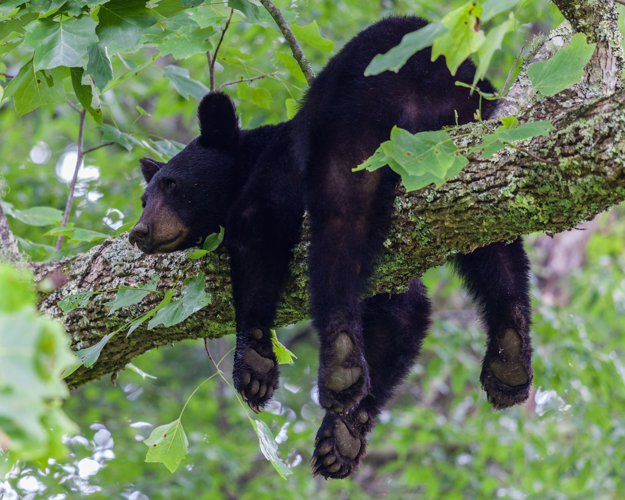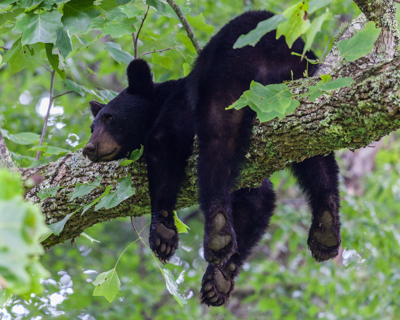First, it was coyotes. Now, black bears and armadillos are the latest surprise guests appearing across Illinois. Residents are being urged to keep their distance. The Illinois Department of Natural Resources (IDNR) emphasizes that residents should not attempt to feed, interact with, or photograph the animals up close.
According to the IDNR, black bear sightings have increased in recent months, with one bear seen roaming through Genoa, Sycamore, and DeKalb. Meanwhile, nine-banded armadillos, typically found in the southern U.S., are now being spotted in northern and central Illinois, including suburban Chicago.
Why are these animals showing up here?
Climate change, habitat expansion, and shifting migration patterns are all contributing factors. The IDNR notes that armadillos have been expanding their range northward and are “considered established in Illinois.” As for bears? Most of those spotted are young males on the move, often searching for new territory or a mate.
As temperatures rise and urban sprawl pushes wildlife out of traditional territories, animals like black bears are venturing farther. According to theIDNR, most bear sightings involve young males dispersing from established populations in Wisconsin or Missouri. Armadillos, meanwhile, are slowly creeping northward as milder winters allow them to survive in areas once too cold for their survival. “It’s a natural range expansion,” said IDNR biologist Chris Jacques. “Illinois is simply the next stop.”
Seeing a black bear in your backyard may be startling, but experts say to stay calm and don’t approach it.
“If you encounter a bear, do not run,” the IDNR warns. “Back away slowly and make loud noises to scare the animal away.”
Keep pets indoors, secure garbage bins, and avoid leaving pet food or bird seed outside, as these can attract bears. Most black bears are not aggressive, but they can become dangerous if they feel cornered or threatened, especially when food is involved.
The IDNR emphasizes that residents should not attempt to feed, interact with, or photograph the animal up close. Instead, they urge the public to report sightings to Wildlife Illinois links: for armadillos, visit the Armadillo Sightings page; for black bears, see the Black Bear Sightings page.
Read more on Chicago Star
- Chicago’s North Shore: Land of trophy homes and sky-high price tags
- Yes, Illinois has real castles—here’s how to tour them
- History gets weird inside Chicago’s offbeat museums
- Former Chicago Bulls standout DeMar DeRozan’s luxe listing has a Michael Jordan backstory
What about Armadillos?

Nine-banded armadillo| Courtesy of Wikimedia
While less intimidating than a bear, armadillos can carry diseases, including leprosy in rare cases, and should not be handled or approached.
“They might look cute, but they’re wild animals,” said Jacques. “Give them space and don’t try to touch or trap them.”
Unlike black bears, armadillos are not protectedin Illinois. However, the IDNR still recommends that people avoid killing them and instead contact local wildlife control if the animals are causing problems.
This isn’t just a quirky wildlife story; it’s a reminder that Illinois’ ecosystems are undergoing significant changes. “We’re going to see more of these sightings as populations rebound and animals expand their range,” Jacques said.
That means communities need to be informed. The IDNR encourages Illinoisans to sign up for wildlife alerts and stay aware, especially in rural and suburban areas where these animals are more likely to roam.
As Illinois becomes home to a wider variety of wildlife, knowing how to coexist safely is key, even if it means double-checking the backyard before letting the dog out.










(0) comments
Welcome to the discussion.
Log In
Keep it Clean. Please avoid obscene, vulgar, lewd, racist or sexually-oriented language.
PLEASE TURN OFF YOUR CAPS LOCK.
Don't Threaten. Threats of harming another person will not be tolerated.
Be Truthful. Don't knowingly lie about anyone or anything.
Be Nice. No racism, sexism or any sort of -ism that is degrading to another person.
Be Proactive. Use the 'Report' link on each comment to let us know of abusive posts.
Share with Us. We'd love to hear eyewitness accounts, the history behind an article.